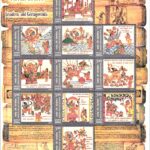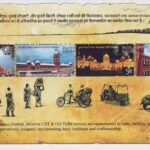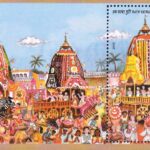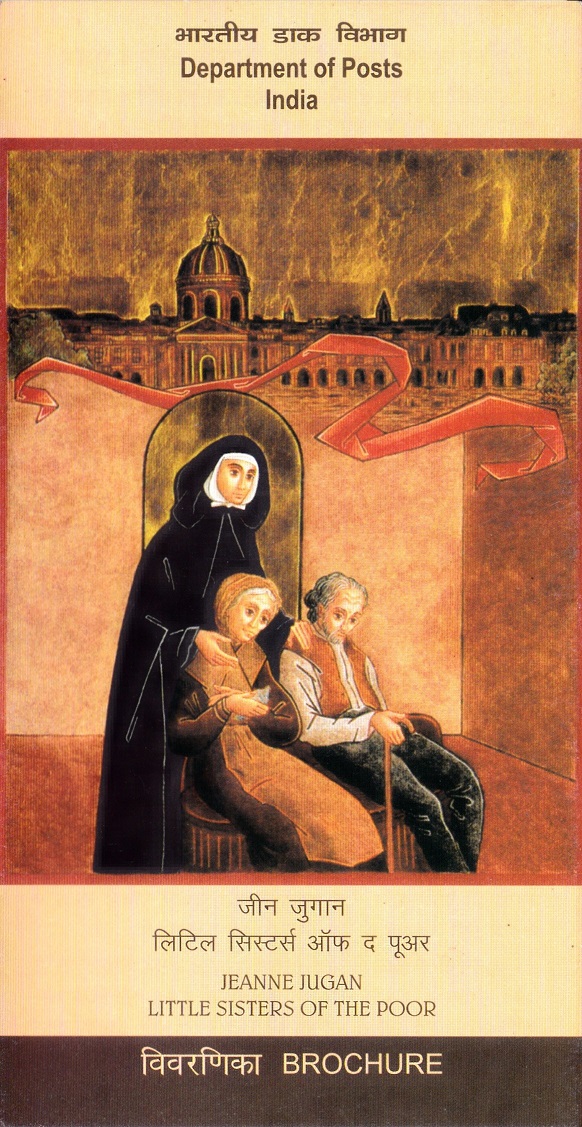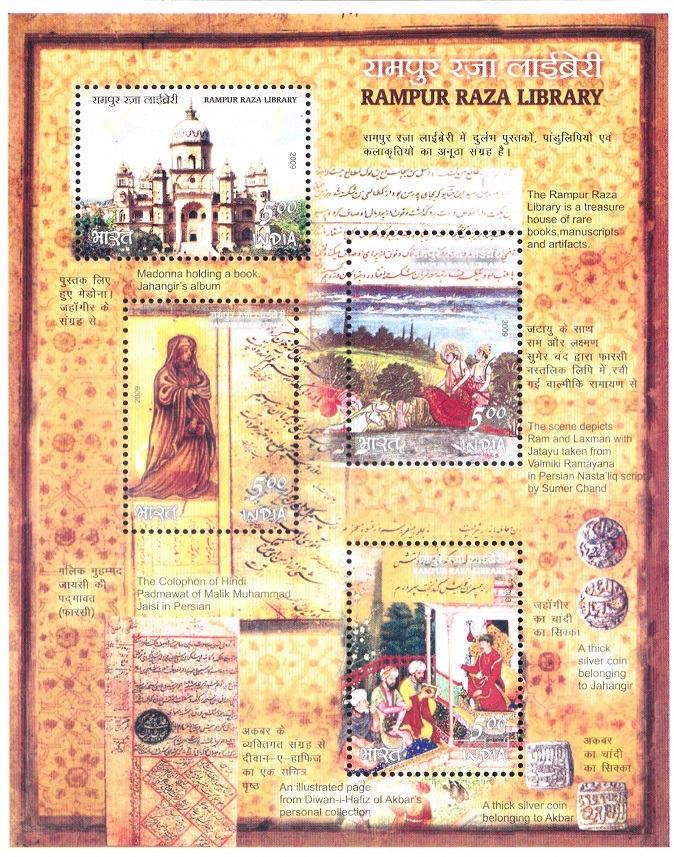
Rampur Raza Library
A Miniature Sheet consisting of 4 nos of commemorative postage stamps on the Rampur Raja Kitab Khana, a repository of Indo-Islamic cultural heritage :
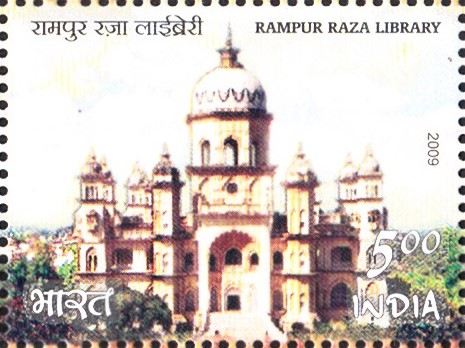
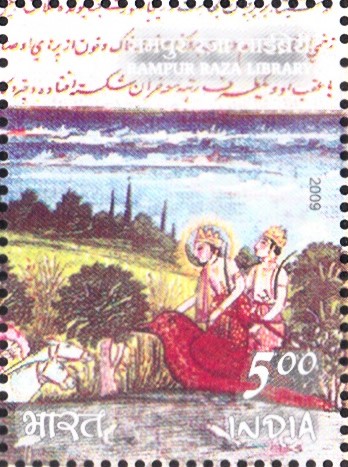
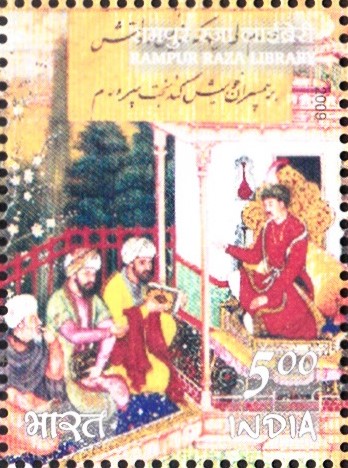
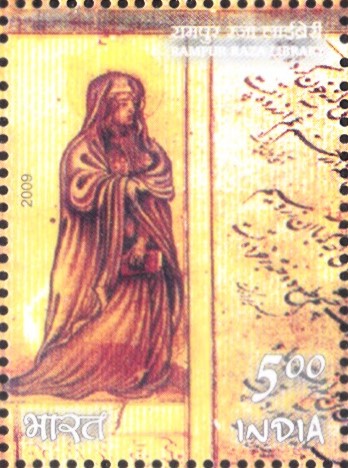
 Issued by India
Issued by India
Issued on Jun 19, 2009
Issued for : The Department of Posts is happy to bring out a set of four commemorative postage stamps on Rampur Raza Library.
Credits :
Stamp & FDC : Kamleshwar Singh
Cancellation : Alka Sharma
Type : Miniature Sheet with above four stamps with borders depicting some other collections in the library, Mint Condition
Colour : Multicolour
Denomination : 500 Paise each
Stamps Printed : 1.0 Million each
Miniature Sheets : 0.5 Million
Printing Process : Wet–Offset
Printer : Security Printing Press, Hyderabad
About :
- Rampur Raza Library was established formally by Government of India on 1st July, 1975 by an Act of Parliament as an institution of national importance. Before that it was a state library under the patronage of Nawab Raza Ali Khan (1930-66).
- The library has a collection of about 50,000 printed books in Arabic, Persian, Sanskrit, Hindi both in Arabic and Devnagari scripts and Pushto. It has 15,000 manuscripts in these languages besides 205 miniature paintings on the Palm-Leaf popularly called ‘Bhoj Patra’.
- Maulana Shibli Numani, a noted Urdu and Persian literary critic who visited the library on 6th April, 1914 wrote of its collection ‘I have consulted this library several times. There is no better collection than this in India. I have also seen the libraries of Egypt, Syria, Turkey and Europe and I can say that this library is richer than any one of them’. Percy Brown, the famous author of ‘Indian Paintings under the Mughals’, considered it a unique library because of its more than hundred illustrated manuscripts. Many other scholars consider the library unique because of the range of its collection where ‘Bhoj Patras’ occupy the pride of place.
- Among the Arabic collections, the Holy Quran shines as a pole star in this great store-house of knowledge. We have here the Holy Book, the oldest piece of handwork in the field of Arabic calligraphy, belonging to the 7th century AD written on parchment in early Kufic script attributed to Hazrat Ali. The library possesses also a copy of Quran calligraphed by the master calligraphist of the 13th century AD of Baghdad, Yaqut-ul-Musta’ Simi. It bears ornamentation in gold and lapis lazuli in different colours. Another precious masterpiece of Arabic manuscript by the same calligraphist is ‘Diwan-al-Hadira’ dated 1221. It was once a part of the royal library of Ibrahim Adil Shah of Bijapore. Another great asset of the library is ‘Sharhul Kafia of Razi’. It bears marginal notes by Sadullah Khan, the Prime Minister of Shahjehan. The manuscript also contains a note by emperor Shahjehan in his own handwriting and bears the seal and signatures of Aurangzeb.
- The Persian collection includes rare books on medicine, philosophy and miniature paintings. These Persian paintings clearly indicate the influence of Mongol and Chinese art which dominated the Herat School for quite some time. The notable titles are ‘Zakhira-i-Khwarism-Shahi’ by Zainuddin Ibrahim Gurgani of the 11th century AD. The manuscript of ‘Diwan-e-Hafiz’ another asset of the library has attracted attention of Sufis and scholars, the world over.
- The Dance of the Dervesh is at the heart of Sufi traditions and there are several paintings pertaining to the Dervishes in the state of ‘Haal’ (Ecstasy). There are also paintings bearing the signature of Jahan Ara Begum that are included in the prize collection.
- Ramayana of Valmiki
- It is a unique illustration translated into Persian by Sumer Chand and illustrated during the reign of Farruck Siyar, a later Mughal, dated 1715 AD. The great Hindu epic Ramayana written in Grantha script is another highlight of the library.
- It is a unique illustration translated into Persian by Sumer Chand and illustrated during the reign of Farruck Siyar, a later Mughal, dated 1715 AD. The great Hindu epic Ramayana written in Grantha script is another highlight of the library.
- Urdu Collection
- Although smaller in number as compared to Arabic and Persian, the Urdu collection of the library possesses the Diwan of Shah Hatim, Kulliyar-e-Mir Taqi Mir, Jurrat, Diwan-i-Soz and indeed the manuscript of Diwan-e-Ghalib with corrections in the poet’s own handwriting. There are also two rare copies of the first short story in Urdu, ‘Rani Ketki Ki Kahani‘.
- Although smaller in number as compared to Arabic and Persian, the Urdu collection of the library possesses the Diwan of Shah Hatim, Kulliyar-e-Mir Taqi Mir, Jurrat, Diwan-i-Soz and indeed the manuscript of Diwan-e-Ghalib with corrections in the poet’s own handwriting. There are also two rare copies of the first short story in Urdu, ‘Rani Ketki Ki Kahani‘.
- Hindi and Sanskrit
- The greatest beauty of the Rampur collection lies in its Hindi and Sanskrit manuscripts. Special mention must be made of Prabodh Chandrika, a work on Hindu grammar. It was written by Baijnath Chauhan and scribed by Girdhari Lal Mishra. There is also a commentary on Jyothish Ratnamala written by Shripat Bhatta. Another striking feature of the collection is the existence of hundred manuscripts in Hindi originally written in Persian. The original complete version of “Madhumati” of Malik Manjan is also preserved besides “Padmavat” of Malik Mohammad Jaisi with Persian translation.
- The greatest beauty of the Rampur collection lies in its Hindi and Sanskrit manuscripts. Special mention must be made of Prabodh Chandrika, a work on Hindu grammar. It was written by Baijnath Chauhan and scribed by Girdhari Lal Mishra. There is also a commentary on Jyothish Ratnamala written by Shripat Bhatta. Another striking feature of the collection is the existence of hundred manuscripts in Hindi originally written in Persian. The original complete version of “Madhumati” of Malik Manjan is also preserved besides “Padmavat” of Malik Mohammad Jaisi with Persian translation.
- Turkish Collection
- Turkish language influenced Indian languages considerably. The word ‘Urdu’ is of Turkish origin meaning ‘Lashkar’ (Camp). Babur‘s ‘Tozak‘ is the highlight of the library. Similarly, the Holy Quran is there in the library in Pushto. The works of the great Pushto writer Khushal Khan Khatak are there. So are the works of the Sufi poet Rahman Baba.
- Turkish language influenced Indian languages considerably. The word ‘Urdu’ is of Turkish origin meaning ‘Lashkar’ (Camp). Babur‘s ‘Tozak‘ is the highlight of the library. Similarly, the Holy Quran is there in the library in Pushto. The works of the great Pushto writer Khushal Khan Khatak are there. So are the works of the Sufi poet Rahman Baba.
- The library has also a unique collection of art objects and rare astronomical instruments. A noteworthy feature of the library collection is that it includes manuscripts belonging to the libraries of Halb, Mecca, Medina, Egypt, Iran, Iraq and Afghanistan. In fact a visit, even today, to the Rampur Raza Library, evokes the spirit of classical traditions. It beckons one and all to come and become a part of the knowledge society for which this country is known since ages.
- Text : Pranav Khuallar.
Subscribe
Login
0 Comments


